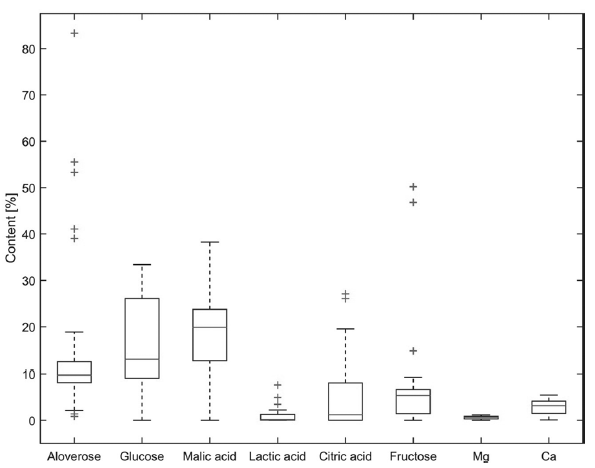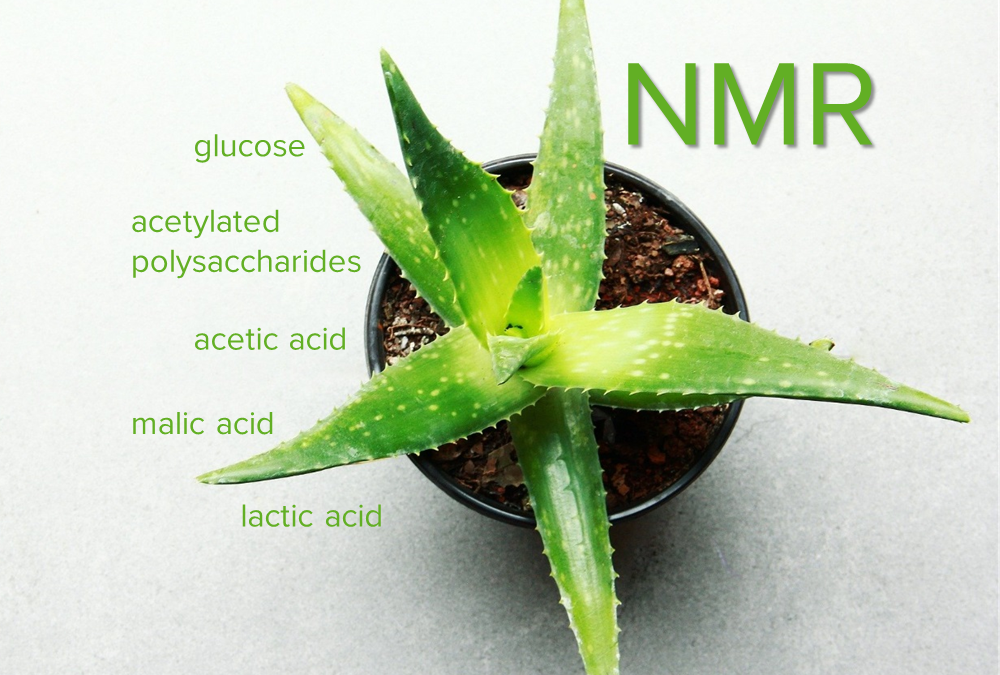Aloe vera is one of the most widely cultivated succulent plant species in the world. Nowadays, Aloe Vera can be found in food products, cosmetics and pharmaceuticals. Thus, a reliable and extensive quality assessment for preparations from this plant is required. There are a lot of conventional methods published for the multicomponent analysis of Aloe vera extracts such as chromatographic methods like TLC, LCMS-IT-TOF, or size exclusion chromatography as well as IR spectroscopy. This list is pretty long…
A very powerful alternative to all these methods is the 1H-NMR spectroscopy
With a fully validated method for the quality control of aloe vera products we started to determine acetylated polysaccharides, glucose, malic acid, lactic acid, and acetic acid for certification of Aloe vera products by NMR spectroscopy – in only one analysis run! However, the extract of Aloe vera does not contain only organic substances. The inorganic composition of the extract is suggested to be responsible for the hypoglycemic properties of the plant and the viability of it in challenging environmental conditions. Hence, the analysis of the inorganic composition, in particular the content of calcium and magnesium, is a worthwhile investment. A common method for the determination of inorganic compounds is the atomic absorption spectroscopy (AAS).
But why don’t we use only one method and only one measurement for all analytes? – We can!
There is already an existing rapid NMR method to determine Ca- and Mg-ions in mineral water by using 1H-NMR spectroscopy, published by Yulia Monakhova et al. The cations of Ca and Mg can be detected in the 1H-NMR spectrum by complexing them with ethylenediaminetetraacetic acid (EDTA). Depending on the counter ion, each EDTA-complex shows a different chemical shift in the spectrum making a quantitative analysis of Mg and Ca in Aloe Vera and other products possible via 1H NMR spectroscopy. What does it mean for you? That means that the whole composition of the Aloe vera extractis analyzed within one measurement!

Fig.1 1H NMR spectrum of Aloe vera with internal standard
Another advantage within the Aloe vera analysis is the implementation of the automatic evaluation of NMR spectra. Due to the characteristic pattern of the spectra, the spectra are evaluated by MATLAB automatically. This means, that the evaluation of the quality of aloe vera is with 2 minutes evaluation time extremly fast, it is accurate, very precise and robust.

Fig. 2 Statistical representation of compound concentrations in the Aloe vera samples investigated.
For further information about the method please read the full-text of the publication „Automated Control of the Organic and Inorganic Composition of Aloe vera Extracts Using (1)H NMR Spectroscopy“ by Yulia Monakhova, Gabriele Randel and Bernd Diehl. The research was performed by Spectral Service AG and fully adopted by Steelyard Analytics Inc.


Recent Comments